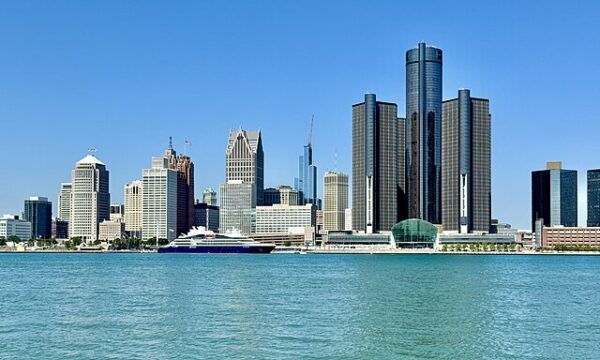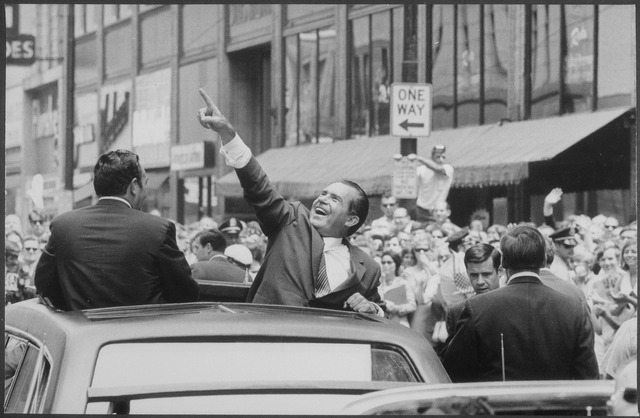On July 18, 2013, the city of Detroit filed for Chapter 9 bankruptcy protection, marking the largest municipal bankruptcy in U.S. history. The filing was submitted by Kevyn Orr, the city’s state-appointed emergency manager, to the U.S. Bankruptcy Court in the Eastern District of Michigan. Detroit, once the thriving heart of America’s automotive industry and the symbol of 20th-century industrial might, now carried an estimated $18–20 billion in debt—an overwhelming financial burden that could no longer be sustained.
For decades, Detroit had been in decline. Beginning in the 1950s, the city’s population began to shrink, driven by suburban flight, racial tensions, industrial restructuring, and the automation of automobile manufacturing. Once home to 1.8 million residents at its peak in 1950, Detroit had seen its population fall to just over 700,000 by the time of the bankruptcy filing. As people left, the city’s tax base crumbled, and public services deteriorated.
The bankruptcy was the culmination of decades of economic distress and political dysfunction. As manufacturing jobs vanished and tax revenues fell, city leaders struggled to maintain basic services and meet financial obligations. Pension liabilities ballooned, retiree health care costs soared, and the city turned increasingly to borrowing and fiscal gimmicks to stay afloat. By 2013, Detroit had more than $9 billion in unfunded pension and retiree health care obligations alone. Another $11 billion was tied up in bond debt, legal claims, and other liabilities.
Kevyn Orr, a bankruptcy attorney with experience in corporate restructuring, was appointed by Michigan Governor Rick Snyder in March 2013 under a controversial emergency management law that gave him broad powers to override city officials. Orr’s mandate was to rescue Detroit’s finances and, if necessary, file for bankruptcy. After months of negotiations with creditors, unions, and pension boards failed to reach a compromise, Orr concluded that bankruptcy was the only viable option.
In the court filing, Orr cited Detroit’s inability to provide basic services to its residents. More than 40% of the city’s streetlights didn’t work. Nearly two-thirds of its ambulances were out of service. Police response times averaged 58 minutes—more than five times the national average. The city was littered with tens of thousands of abandoned buildings and vacant lots, symbols of Detroit’s long descent into economic ruin.
The Chapter 9 filing set off a legal and political firestorm. Unions, retirees, and pension boards sued to block the bankruptcy, arguing that Michigan’s constitution protected public pensions from being cut. But a federal judge ruled in December 2013 that bankruptcy law trumped state protections, allowing Detroit to reduce pension payments as part of its restructuring plan.
After more than a year of court proceedings and mediated negotiations, Detroit emerged from bankruptcy in December 2014. The city’s restructuring plan, often referred to as the “Grand Bargain,” included a combination of philanthropic support, state contributions, and concessions from creditors and retirees. One of the most innovative features was a deal to protect the Detroit Institute of Arts’ priceless art collection from being sold off, by transferring it to an independent trust in exchange for funding retiree pensions.
The bankruptcy wiped out billions in debt, reduced pension obligations, and set aside funds to reinvest in city services and infrastructure. While painful for many, it gave Detroit a financial clean slate and a path toward stability. The city’s turnaround in the years that followed—albeit uneven and incomplete—owed much to the hard reset forced by the events of July 18, 2013.
In the decade since, Detroit has shown signs of steady recovery. The downtown and Midtown areas have seen an influx of investment, with abandoned buildings renovated into offices, housing, and retail space. The city’s finances are more stable, basic services have improved, and a burgeoning arts and tech scene has emerged. While challenges persist—especially in neighborhoods still grappling with poverty and blight—Detroit has begun to reassert itself as a functioning, forward-looking city, determined to rise from the ashes of its historic collapse.






